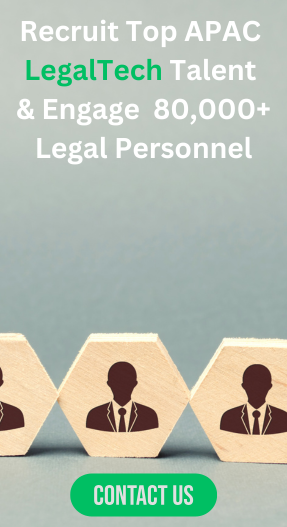
Talent and Technology Driving Mergers and Acquisitions
The full potential of a Merger or Acquisition (M&A) is realised when the integration is not delayed. Integration is not just limited to stakeholders, employees or customers, but should extend to technological infrastructure. Imagine how hard it will be to integrate a technologically advanced infrastructure of a new age enterprise with a conventional and not so digitalised enterprise.
Effective integration can be achieved by utilising deal professionals (talent) who are equipped with or trained in cutting-edge technologies.
Drivers of M&A
According to Harvard Business Review, the failure rate of M&As is between 70% and 90%. The study further sums up that, “The success or failure of an acquisition lies in the nuts and bolts of integration.”
The integration can be broken into two parts talent and technology:
- Talent: In a March 2021 EY report titled Will COVID-19 turbo-charge M&A and transformation?, states that “Talent is a major consideration for Asia-Pacific executives. As they reimagine operating in the new normal, new skills will be required. Strategically investing in upskilling and reskilling the existing workforce, as well as investing in new hires with emergent skills, will be key to thriving in the post-COVID business environment.” The report lists, “Identify areas of investment in talent” as the main strategic consideration by 23% of participants.
The appetite and ambition for M&As are only increasing and actively pursued and APAC countries are optimistic about the growth opportunities.
Technology Drivers: In the following parts, we will discuss how technology is beneficial in the overall M&A process.- Deal Planning: Technology including Artificial Intelligence (AI) augments the M&A process from day one, i.e. from selecting a progressive target to planning best post-merger strategies. AI-empowered data analytics along with Machine Learning (ML) enable the companies to research and extract data on markets, identifying potential M&A prospects and gathering information with ease
- Due diligence: Due diligence is the key component and is the most time-consuming while also being vulnerable to human errors. It is time- and effort-intensive to organise and assemble the documents necessary for potential investors or purchasers to assess a firm or asset. The technology-driven data analysis and background checks involving company details, it's business and economic conditions among other information, mitigate risks within an M&A. AI-derived network and sentiment analysis identifies the popular emerging companies assisting in making faster decisions regarding targets and would be relatively free from biases along with providing an upper hand in the negotiations with valuable insights.
- Execution and post-merger: Tech-powered analytics prepare buyers for post-deal risks as well as identify synergy opportunities. Insights into further negotiations, cost-saving strategies, value creation, optimal business activities, change in risk profile, etc. are also available.
AI-led efficiency
AI-based data analysis plays a pivotal role in business valuation by extracting publically available data to arrive at its valuation. Data including financial performance and cash flow of the company.
Additionally, cognitive technology helps collect and analyse data, offering insight, suggestions, and automating actions. The accuracy of cognitive technology is increasing, making it less sensitive to human mistakes such as weariness or omission of crucial information.
Dealmakers are keen to deploy AI to enhance review procedures with its accuracy. Thanks to AI and ML, dealmakers can now focus on higher-value operations in minutes rather than weeks.
A study by Datasite on The New State of M&A states that due diligence with technologies such as AI will take less than a month in 2025 vs. 3 to 6 months in 2020. The study highlights that over two-thirds of buy-side dealmakers still manually manage transaction progress using word processing, spreadsheet, or checklists. Consider the impact on the buyer-side team’s performance with AI on speeding up and removing analog techniques of diligence.
AI also helps companies plan their post-acquisition exit strategies and steps by monitoring the performance of competitors and the market environment.
Additionally, the use of AI in cross-border and multilingual deals can not be ignored. While most M&A contracts are written in English, AI-powered systems enable translation and evaluation of these languages in different languages.
Word of caution
According to Derisking AI: Risk management in AI development | McKinsey, while implementing AI at the work-front, more attention is required than standard information technology (IT). With AI comes several uncalled IT concerns including ethical, legal, operational, compliance, and regulation-based.
Further, the rapid decentralisation of AI across various enterprises makes tracking and monitoring difficult.
Sowing the seeds
AI in M&A not only speeds up the process but also reduces business weariness for both buy- and sell-side teams. It helps concentrate on essential characteristics of the offer, skipping tedious tasks like research and due diligence. It guides efficient M&A-related decision-making of the companies through the M&A life-cycle.
AI and other technologies are highly time-efficient, cost-effective, and error-reducing. They are an extension of human skills and in no way a replacement for human capabilities. In the foreseeable future, general AI could even assist in developing M&A strategies.
While AI-based technological implementation may require more specific IT concerns such as ethical and operational, AI technology management is a matter of trust. Odds are in the favour of the fact that AI and human intelligence will find a way to work mutually that benefits the larger cause.
The potential of AI in the field of M&A is endless. The pandemic has transformed how we do business. The growth and survival of a company post-pandemic will rely on the adoption of AI and ML Next-Gen tools.
Disclaimer: The views and opinions expressed in this article do not necessarily reflect the official policy or position of Novum Learning or Legal Practice Intelligence (LPI). While every attempt has been made to ensure that the information in this article has been obtained from reliable sources, neither Novum Learning or LPI nor the author is responsible for any errors or omissions, or for the results obtained from the use of this information, as the content published here is for information purposes only. The article does not constitute a comprehensive or complete statement of the matters discussed or the law relating thereto, and does not constitute professional and/or financial advice.





